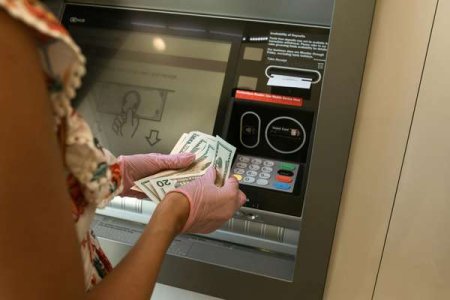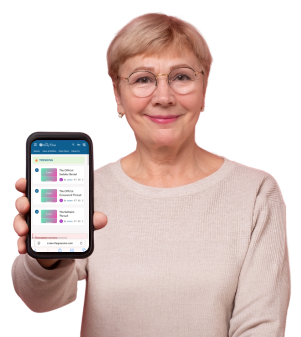Unlock an extra $1,756 in SNAP benefits next week—See how much you could get!
By
Aubrey Razon
- Replies 0
As retirement years approach, managing finances becomes more crucial than ever. For many Americans, a key lifeline is the Supplemental Nutrition Assistance Program (SNAP).
With rising costs, now is the time to uncover the benefits you may be missing out on.
In the coming week, a fresh wave of SNAP funds is set to be deposited into the bank accounts of eligible households.
This round of payments, which begins on November 1st, could see an increase of up to $1,756 for some families, depending on household size.
But how much more could you get? Let's dive into the details.
The program is federally funded but administered at the state level, which means payment schedules and additional details can vary from one state to another.
You can find specific information for your state on the USDA website.
The amount of SNAP benefits a household receives is based on several factors, including income, assets, and the number of people living in the home.
As we face inflation and increased food prices, these benefits have become even more crucial for many families.
Here's a snapshot of the maximum monthly benefits for different household sizes, reflecting the adjustments for 2025:
For each additional person beyond eight, the benefits increase by $220.
It's important to note that these figures represent the maximum benefits; the actual amount you receive may be less, depending on your specific circumstances.
The program is designed to assist those with the greatest need, which typically includes seniors on fixed incomes, individuals with disabilities, and low-income families.
If you're unsure whether you qualify, it's worth applying to find out. Applications can be submitted online or in person at your local SNAP office.
Adults aged 52 to 54 are now included in the group that must work or participate in training programs to receive benefits.
Once approved, funds are paid retroactively from the date of application, offering relief even as recipients await their Electronic Benefit Transfer (EBT) cards.
The SNAP program operates across all 50 states, with income limits adjusted for areas with a higher cost of living, such as Alaska and Hawaii.
While benefits are primarily used for groceries, it's important to remember that items like alcohol, cigarettes, and pet food are not eligible for purchase with SNAP funds.
 Have you recently navigated the SNAP application process, or do you have tips for managing your benefits? Share your experiences and advice in the comments below.
Have you recently navigated the SNAP application process, or do you have tips for managing your benefits? Share your experiences and advice in the comments below.
With rising costs, now is the time to uncover the benefits you may be missing out on.
In the coming week, a fresh wave of SNAP funds is set to be deposited into the bank accounts of eligible households.
This round of payments, which begins on November 1st, could see an increase of up to $1,756 for some families, depending on household size.
But how much more could you get? Let's dive into the details.
Understanding SNAP Payments
SNAP, formerly known as food stamps, is a program that offers nutritional assistance to millions of eligible, low-income individuals and families.The program is federally funded but administered at the state level, which means payment schedules and additional details can vary from one state to another.
You can find specific information for your state on the USDA website.
The amount of SNAP benefits a household receives is based on several factors, including income, assets, and the number of people living in the home.
As we face inflation and increased food prices, these benefits have become even more crucial for many families.
Monthly SNAP Benefit Breakdown
The SNAP program calculates benefits with the aim of addressing the nutritional needs of various household sizes.Here's a snapshot of the maximum monthly benefits for different household sizes, reflecting the adjustments for 2025:
- Household of one: $292
- Household of two: $536
- Household of three: $768
- Household of four: $975
- Household of five: $1,158
- Household of six: $1,390
- Household of seven: $1,536
- Household of eight: $1,756
For each additional person beyond eight, the benefits increase by $220.
It's important to note that these figures represent the maximum benefits; the actual amount you receive may be less, depending on your specific circumstances.
Qualifying for SNAP
To qualify for SNAP, households must meet certain income and resource criteria.The program is designed to assist those with the greatest need, which typically includes seniors on fixed incomes, individuals with disabilities, and low-income families.
If you're unsure whether you qualify, it's worth applying to find out. Applications can be submitted online or in person at your local SNAP office.
Recent Changes to SNAP
The SNAP program is continually evolving to better serve its participants. As part of the 2025 Cost-of-Living Adjustments, the USDA has made several updates:- Slight increases in maximum benefits for some household sizes to account for inflation.
- The shelter deduction cap has risen to $712 in most states.
- Asset limits have increased to $3,000 for most households and $4,500 for those with elderly or disabled members.
- The homeless shelter deduction has increased to $190.30.
Adults aged 52 to 54 are now included in the group that must work or participate in training programs to receive benefits.
Expedited Benefits and Retroactive Payments
In certain cases, states may offer expedited benefits to those in urgent need, potentially providing assistance within seven days.Once approved, funds are paid retroactively from the date of application, offering relief even as recipients await their Electronic Benefit Transfer (EBT) cards.
The SNAP program operates across all 50 states, with income limits adjusted for areas with a higher cost of living, such as Alaska and Hawaii.
While benefits are primarily used for groceries, it's important to remember that items like alcohol, cigarettes, and pet food are not eligible for purchase with SNAP funds.
Key Takeaways
- A new round of SNAP payments is set to be deposited into eligible households' bank accounts starting November 1, with the exact date varying by state.
- Monthly payment amounts depend on household size, with a maximum of $1,756 for a household of eight and as much as $292 for an individual.
- SNAP benefits can be used like a debit card at authorized food retailers and are adjusted annually for cost-of-living increases.
- The SNAP program's eligibility requirements and benefit amounts have changed slightly for 2025, with increases to accommodate inflation and other economic factors.







